What to know
The radiation thermometer puts common radiation doses in perspective. This resource can help people assess their own risk in the event of a radiation emergency.
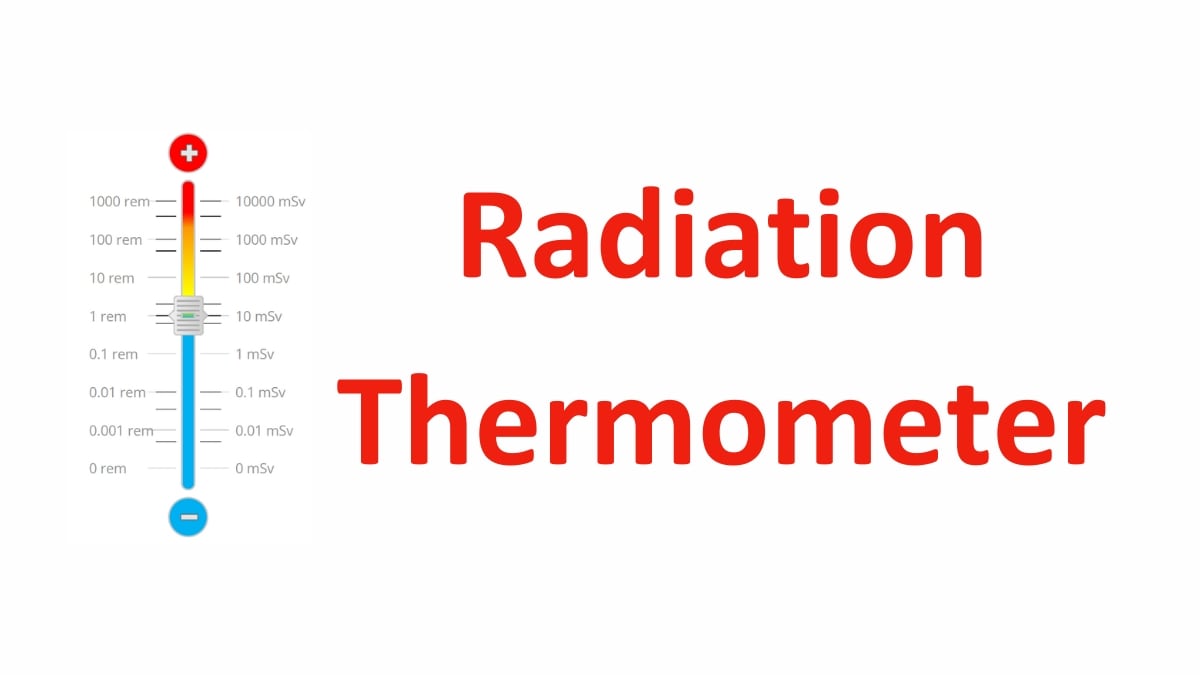
Radiation dose
Radiation dose represents the amount of radiation absorbed by the body and is measured in millisieverts (mSv) [pronounced MIH-lee SEE-vert] or rem (1 rem equals 10 mSv). The millisievert unit of measurement is used internationally while the rem is used in the United States.
Learn more about radiation dose.
Radiation thermometer
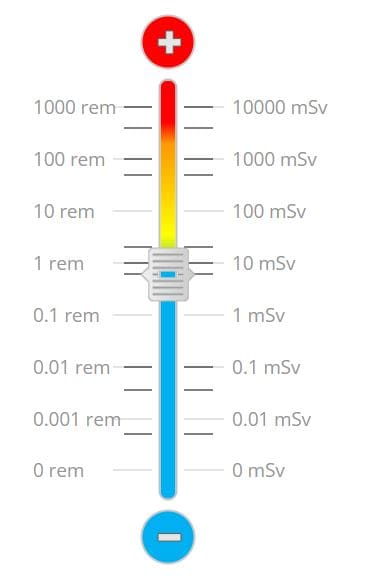
The thermometer uses a logarithmic scale, where each gray line represents a ten times increase or decrease in the dose, rather than a one unit increase or decrease.
Find below examples of common radiation sources and possible health effects at different doses.
Examples of common radiation sources, dose, and outcomes
100% lethality

The dose that results in death for 100% of those who receive it is 1000 rem / 10000 mSv.1 People who are close to the site of a radiation emergency may be at risk for this dose.
50% lethality
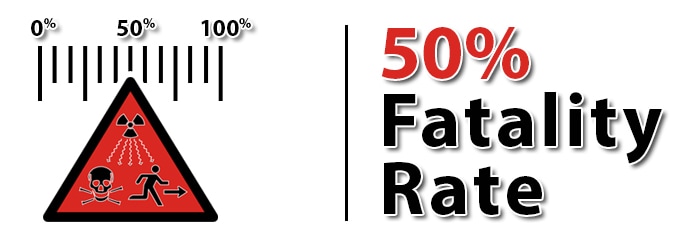
The dose that results in death for 50% of those who receive it is 400 rem / 4000 mSv.1 People who are close to the site of a radiation emergency may be at risk for this dose.
Acute radiation syndrome and increased cancer risk

The lowest dose that could cause acute radiation syndrome is 100 rem / 1000 mSv.1
Dose for which risk of getting a fatal cancer increases from about 22% (average risk of cancer in United States) to about 27% (derived from2).
Damage to blood cells
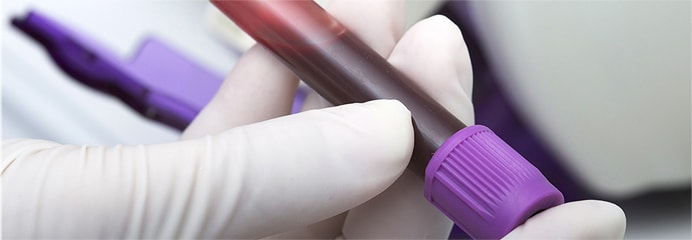
The dose that causes damage to blood cells is 50 rem / 500 mSv.34
Relocation threshold

The recommended threshold for relocating people is 2 rem / 20 mSv. If projected dose from radioactive contamination is greater for the coming year, relocate.5
CT scan
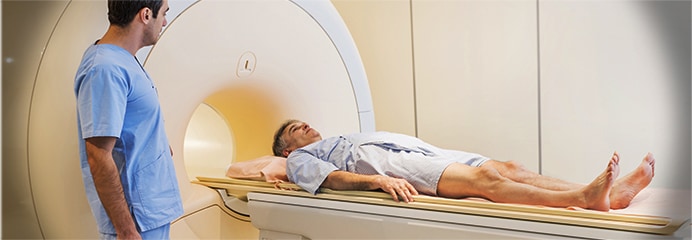
The dose received during a typical CT (computerized tomography) scan is 1 rem / 10 mSv.6
Average annual dose in the U.S.
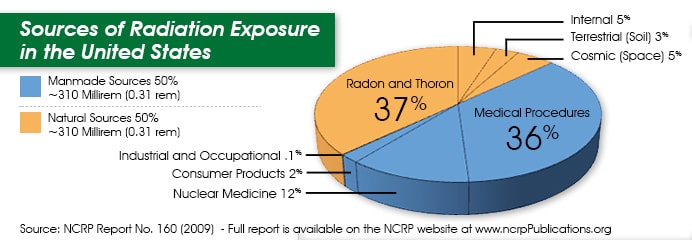
Average dose per year for people in the U.S.6 from
- naturally occurring background radiation – 310 mrem
- medical exposures – 300 mrem
- consumer products – 10 mrem
Chest x-ray
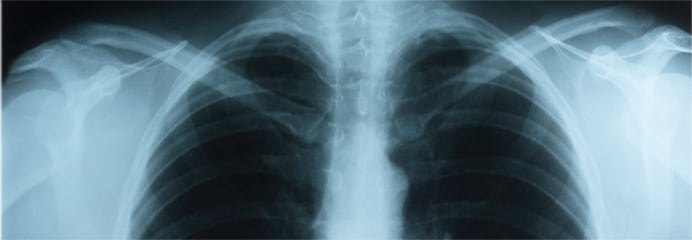
A typical dose of radiation from a chest X-ray is 0.01 rem / 0.1 mSv.6
Flight from NYC to LA
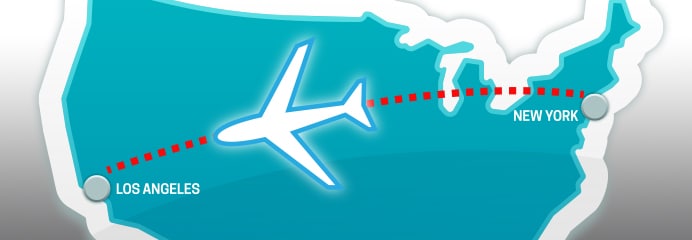
A typical dose from high altitude solar and cosmic radiation during a flight from New York City to Los Angeles is 0.0035 rem / 0.035 mSv (derived from7).
Dental x-ray
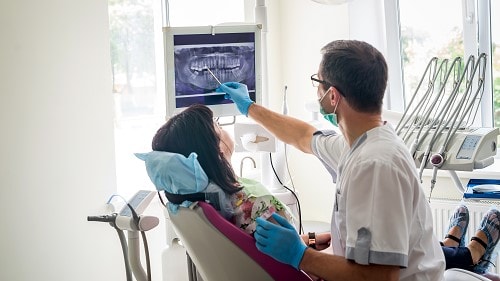
A typical dose of radiation from a dental x-ray (bitewing and full mouth survey) is 0.0005 rem / 0.005 mSv.8
Radiation dose in mSv and rem
Rem (rem)
Millisievert (mSv)
DESCRIPTOR
1000
10,000
Dose that results in death for 100% of those who receive it.(1) People who are close to the site of a radiation emergency may be at risk for this dose.
400
4,000
Dose that results in death for 50% of those who receive it.(1) People who are close to the site of a radiation emergency may be at risk for this dose.
100
1,000
Lowest dose that could cause acute radiation syndrome.(1)
Dose for which risk of getting a fatal cancer increases from about 22% (average risk of cancer in United States) to about 27%.(derived from 2)
50
500
Dose that causes damage to blood cells.(6,7)
2
20
Recommended threshold for relocating people (if projected dose from radioactive contamination is greater for the coming year, relocate).(8)
1
10
Dose received during a typical CT (Computerized Tomography) scan.(3)
0.62
6.2
Average dose per year for people in the U.S.(3) from:
- naturally occurring background radiation – 310 mrem
- medical exposures – 300 mrem
- consumer products – 10 mrem
0.01
0.1
Typical dose from a chest x-ray.(3)
0.0035
0.035
Dose from high altitude solar and cosmic radiation during a flight from New York City to Los Angeles.(derived from 9)
0.0005
0.005
Typical dose from a dental x-ray (bitewing and full mouth survey).(5)
- CDC. Acute radiation syndrome: A fact sheet for physicians [online]. 2013.
- National Research Council of the National Academies, Committee to Assess Health Risks from Exposure to Low Levels of Ionizing Radiation. Health risks from exposure to low levels of ionizing radiation: BEIR VII, Phase 2 [online]. 2006. Available from URL: http://www.nap.edu/openbook.php?record_id=11340&page=R1
- Eisenbud M, Gesell T. Environmental radioactivity. 4th ed. Oxford (UK): Academic Press; 1997.
- Mettler F, Upton A. Medical effects of radiation. 2nd ed. Philadelphia: W.B. Saunders; 1995.
- U.S. Environmental Protection Agency (EPA). PAG manual: Protective action guides and planning guidance for radiological incidents (draft for interim use and public comment) [online]. 2013. Available from URL: http://www.epa.gov/sites/production/files/2015-06/documents/pag-manual-interim-public-comment-4-2-2013.pdf
- National Council on Radiation Protection and Measurements (NCRP). Ionizing radiation exposure of the population of the United States. NCRP 2009;160.
- U.S. Department of Transportation (DOT), Federal Aviation Administration Advisory Circular. Radiation exposure of air carrier crewmembers – FAA AC 120-52 [online]. 1990. Available from URL: http://www.solarstorms.org/FAAAirlines.html
- Gibbs SJ. Effective dose equivalent and effective dose: Comparison for common projections in oral and maxillofacial radiology. Oral Surg Oral Med Oral Path Oral Radiol Endod 2000;90(4):538-545.
- U.S. Food and Drug Administration (FDA). Trends in Mammography Dose and Image Quality 1974-2014 [online]. 2015. Available from URL: https://www.fda.gov/radiation-emitting-products/mqsa-insights/mqsa-insights-articles
